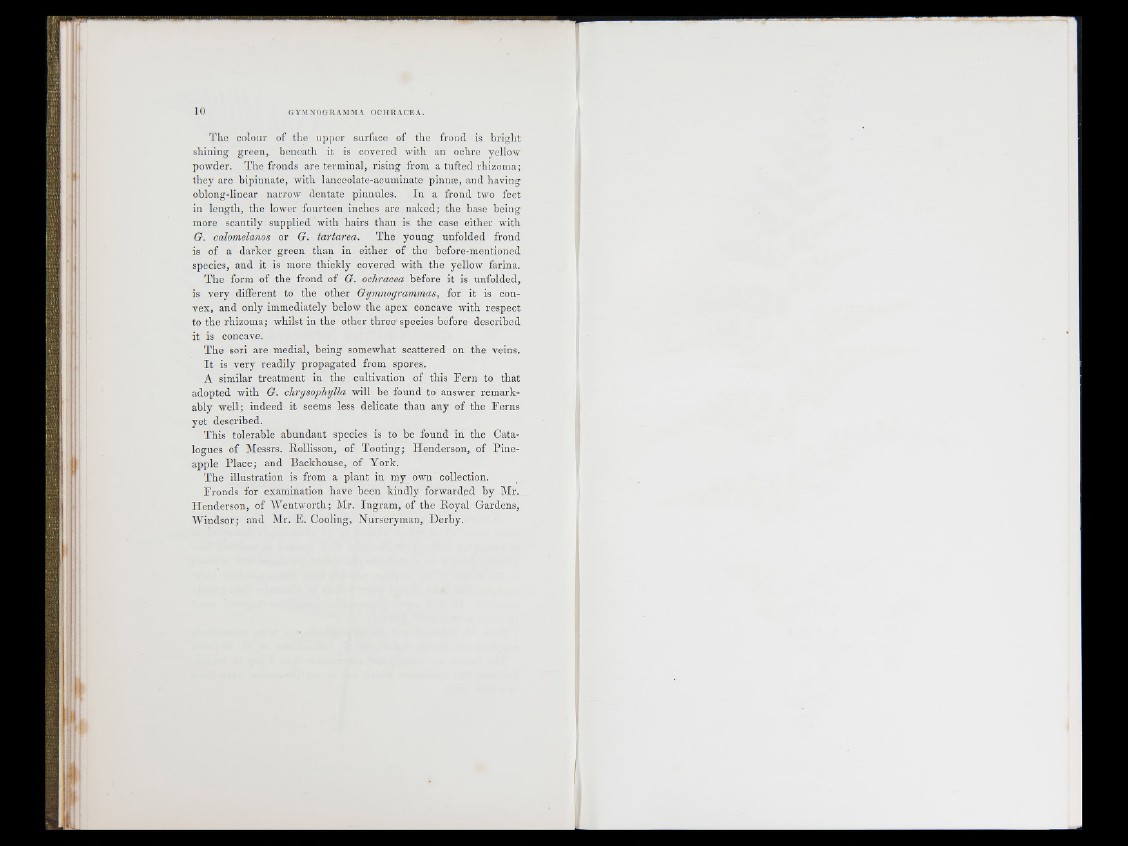
The colour of the upper surface of the frond is bright
shining green, beneath it is covered with an ochre yellow
poivder. The fronds are terminal, rising from a tufted rhizoma;
they are hipinnate, with lanceolate-acuminate pinna;, and having
oblong-linear narrow dentate pinnules. In a frond two feet
in length, the lower fourteen inches are n ak ed ; the base being
more scantily supplied with hairs than is the case either with
G. calomdams or G. tartarea. The young unfolded frond
is of a darker green than in either of the before-mentioned
species, and it is more thickly covered with the yellow farina.
The form of the frond of G. ochracea before it is unfolded,
is very different to the other Qymnogrammas, for it is convex,
and only immediately below the apex concave ivith respect
to the rhizoma; whilst in the other three species before described
it is concave.
T h e sori are medial, being somewhat scattered on the veins.
I t is very readily propagated from spores.
A similar treatment in the cultivation of this F e rn to that
adopted with G. chrysophylla will be found to answer rema rk ably
well; indeed it seems less delicate than any of the F erns
y e t described.
This tolerable abundant species is to be found in the Ca talogues
of Messrs. Rollisson, of T ooting; Henderson, of P in e apple
P la c e ; and Backhouse, of York.
The illustration is from a plan t in my own collection.
Fronds for examination have been kindly forwarded by Mr.
plenderson, of "Wentworth; Mr. In g ram , of the Royal Gardens,
W in d so r; and Mr. E. Cooling, Nurseryman, Derby.